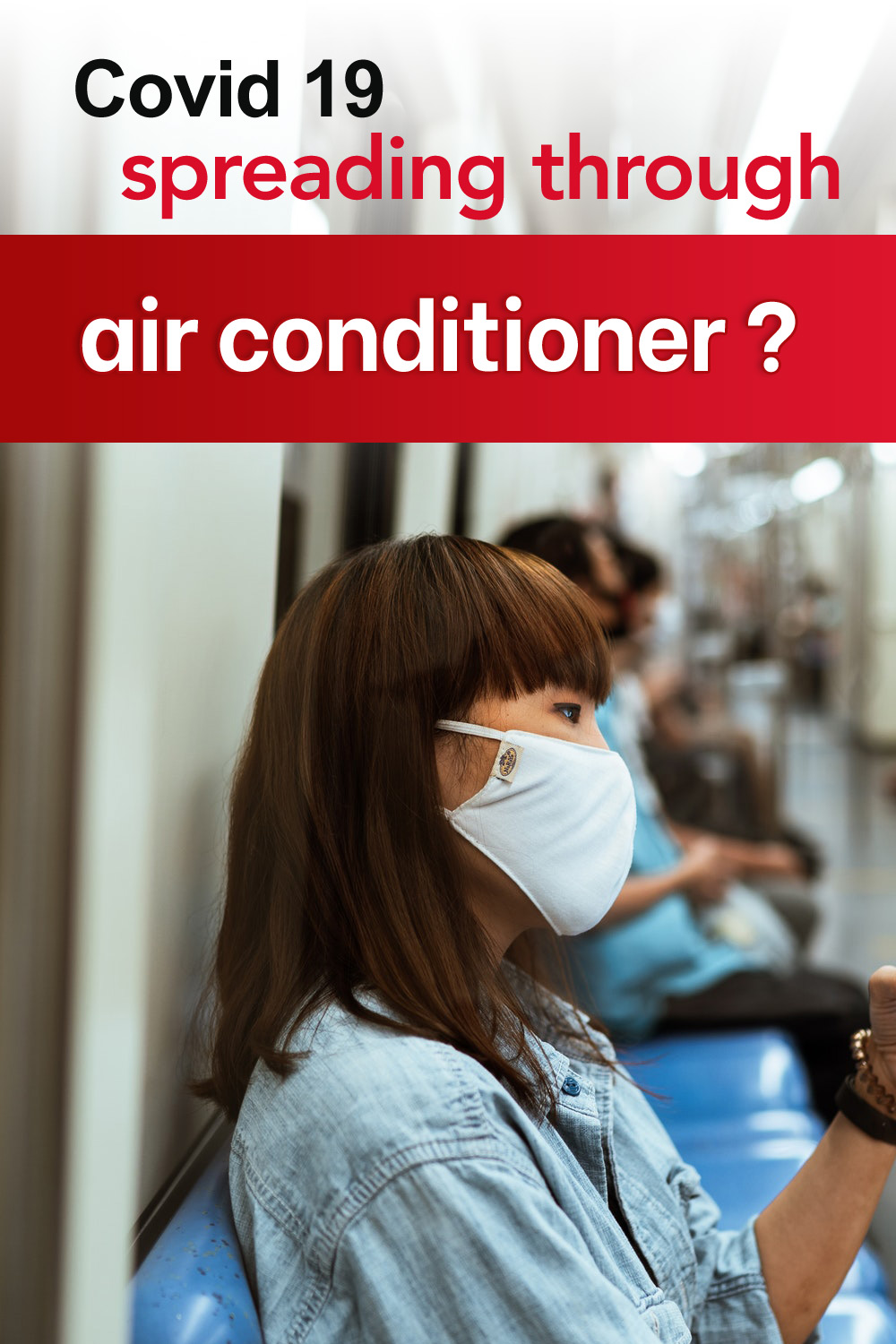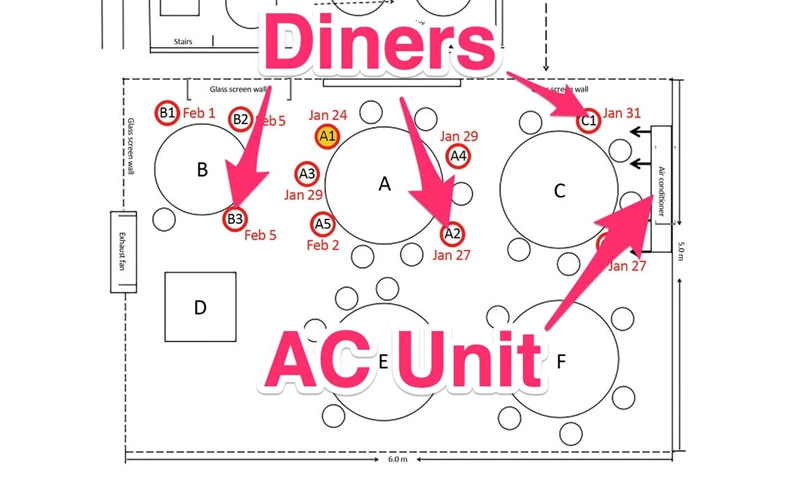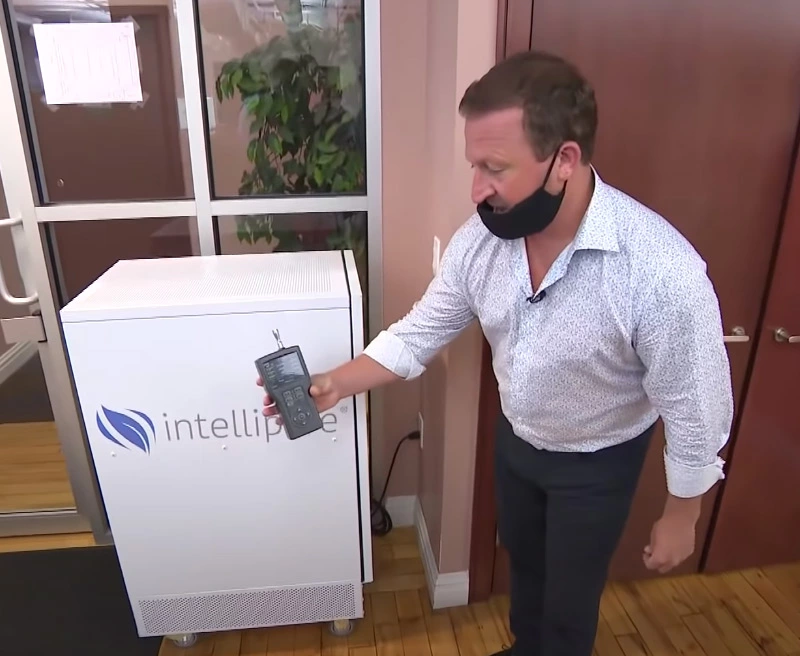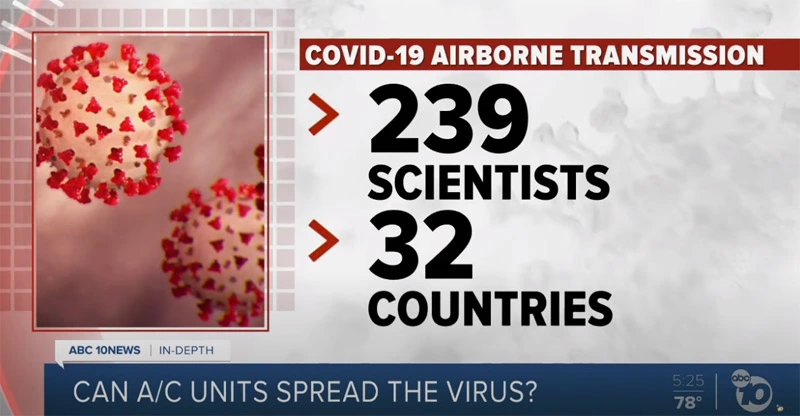
During summer when the temperature is extreme, air conditioning is used to maintain the temperature as well as clean the air in the buildings and vehicles. But is there anything wrong with using air conditioning during the COVID-19 pandemic?

Although there are several ongoing findings on whether air conditioning can spread COVID-19 or not but there are many studies that have proven air conditioning can help the spread of COVID-19. Droplet transmission is the most common way at which COVID-19 can be transmitted.
A spittle or breath particle filled with a virus that comes out of an infected person’s mouth or nose when they speak, breathe, sneeze, or cough usually disperse within the person is expelled from. However, when these droplets come in contact with someone else’s mouth, eyes, nose, the person concerned may be infected.
Furthermore, there’s also aerosol transmission (a situation whereby microscopic infectious particles emitted from an infected person are so small that they stay suspended in the air and infect the passersby). Since aerosols are much smaller than droplets, they can travel far in the air and even get deeper into the lungs of anyone that inhales them.
There is an ongoing debate among scientists on the limitation of aerosol transmission. However, it is claimed that it does spread, especially in a poor ventilated confined indoor settings. Hence, there is a certain eventuality that air conditioning may be another way to spread the virus through collecting the virus-filled particles expelling from an infected person and later disperse the air back into the same room. Studies have shown that many other infectious diseases like tuberculosis, influenza, measles, SARS, and others can be spread through HVAC–heating, ventilation, and air conditioning system. And have shown that COVID-19 spreading through the HVAC system might be possible as well.
Role of air conditioning in transmitting COVID-19
An air conditioning collects outdoor air and distributes an equal amount of indoor air that is required. However, the air filter inside this unit is designed to dilute and get rid of contaminants like dust, pollen, pet dander, and others (but can’t get rid of airborne particles unless your air conditioning units have HEPA- high-efficiency particulate air filter).
Since most systems recirculate indoor air, it is believed that during the process aerosol particle filled with SARS-CoV-2 (the virus associated with COVID-19) can spread from one place to another, but there is a limit to how COVID-19 may be spread through air conditioning units.

Studies that confirmed its possibility
According to a study that has not undergo peer review, scientists in Oregon got several samples from different areas inside a hospital’s air conditioning units and discovered genetic material from the SARS-CoV-2 virus. However, there’s no assessment on whether the sample can cause infections, but this is to show that the virus can be transmitted through the air conditioning unit.
Technically, it’s not the air conditioning that’s really causing the transmission. Is just that when the temperature is extreme, people tend to seek comfort indoor by turning on their air conditioning systems and closing every windows and door to prevent hot air from the building and to make the air conditioning more productive. Meanwhile, you are preventing the flow of fresh air in the building and everyone in the room is sharing the same air.
And if there’s anyone in the room who had been infected with COVID-19, no doubt the person is breathing out the virus. Because of this, there is more opportunity to transmit the virus due to airborne droplets that may linger around and potentially cause infection to others that inhale them. In contrast, if you were outside next to someone infected with COVID-19, breathing out viral particles won’t be a problem because there’s much airflow available outside to tackle those particles quickly, thus lowering the risk of infecting another person nearby. However, maybe that’s why experts do encourages outdoor gatherings and events as they are considered less risky than indoor activities (though both are not completely safe).

Another major risk is those small droplets containing the virus can be effortlessly moved around a room by a strong air current that is generated by fans, air conditioning units, or even by an open window.
In fact, there was a case of COVID-19 reported from a restaurant in China, where some people were infected by an asymptomatic COVID-9 patient. According to the scientists from CCDCP – Chinese Centers for Disease Control and Prevention that assess the video footage of the infected diners, it was discovered that the outbreak was as a result of the strong air currents generated by the air conditioning unit that blow the virus-filled aerosols from the infected person to the diners nearby. And that the restaurant has no windows to ventilate the building and purify the air.
Without further ado, the point is that virus-containing aerosols can be carried by air current so if you are in the same room with a COVID-19 patient, using an air conditioning and the room is not well ventilated, even if you are keeping a great distance from the infected person, you may not be completely safe.
